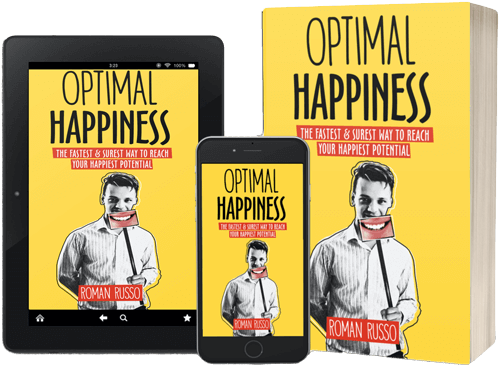
Often we overspend on things that we could easily source elsewhere for cheaper. Take accommodation, for example. The same house in Croatia or Greece can cost up to 10 times more during the summer holiday season compared to the off-season. Similarly, after visiting India, I noticed a 10x mark up on certain products we buy here in the Western world, such as spices, jewelry, and cloth fabrics, since they are all imported from there anyway. And since I discovered AliExpress, I am disgusted by some stores that buy all their inventory on that website and have the audacity to ask for the same 10x mark up on their products. For example, many products we find on Amazon are actually sourced from AliExpress. So, if you ever find something interesting on Amazon, try using Google Lens to see if you can find it for cheaper elsewhere.
Certainly, almost everything we can buy in any store can be sourced somewhere else for much cheaper if we only know where to look, with a simple Google search can lead us to cheaper alternatives. Additionally, reverse engineering or simply DIY-ing (Do It Yourself) these products can be an easy and cheaper alternative to buying a ready-made product. There are countless tutorials available online, if we are willing to look. By conducting this research, we can significantly reduce our expenses and improve our quality of life, as we no longer need a high income to lead a comfortable life.
For me, the areas of life that have made a huge difference in terms of spending are:
1. Accommodation – Some countries, cities, and seasons are much more expensive than others, so living in some places, especially if they are expensive, is a personal choice. For example, if we own a house in a central location, we can rent it out on Airbnb and use the money to travel, sometimes indefinitely. This is because the income from that house will cover expenses in cheaper countries. I have seen it done!
2. Clothing and fabrics – Many companies sell low-quality cloth at a premium price, encouraging us to buy and throw away cloth every season instead of investing in timeless pieces. They get away with this practice because most people aren’t well-informed about what actually constitutes good quality cloth. For example, polyester and other synthetic fabrics are inferior in their quality compared to linen, cotton, and wool, which are a good investment.
3. Cooking – Often, many products that we can buy inside a restaurant or supermarket can be prepared at home for a fraction of the cost. For example, gnocchi purchased in a restaurant can cost $10, while the whole dish made at home can cost as little as $0.5. Additionally, the grocery bill will vary significantly depending on where we choose to buy our ingredients, such as different supermarkets, farmer’s markets, or even growing/foraging them ourselves.
4. Second-hand stores – Just because something is sold in a second-hand store doesn’t mean that it is bad, old, or broken. Our social status doesn’t go down just because we walk into one of these stores and wear something purchased in these places. In fact, we can buy similar, if not better, quality products, sometimes brand new, for 10 times cheaper at places like second-hand stores, farmer markets, charity stores, eBay, car boot sales, garage sales, and the like. Often, we can find incredible and unique things there, making a visit to places like that an interesting treasure hunt.
5. Gift giving – For birthdays, holidays, and other occasions, most people prefer to buy gifts. However, it is possible to DIY something that would be more unique and definitely special because it is handmade. Ideas for these DIY gifts are infinite, with Pinterest, TikTok, and other platforms being flooded with DIY ideas.
In this way, I invite readers to educate themselves about topics such as:
6. Foraging and growing our own food – All products come from nature, so if we know where to look, we can find them in nature as well. Everything found will be free and often of better quality since products sold in supermarkets use pesticides or other unhealthy chemicals. Similarly, we can grow our own food, which is also a profitable, healthy, and fun activity.
7. Precious metals and stones – Since I learned about this category of products, I now regularly see inferior quality cheap jewelry being sold for 10x what it actually should cost. For example, gold plated brass is being sold for the price of 18k gold. Naturally, consumers pay a significant markup simply because they don’t know any better.
8. Pure DIY – You can buy a house refurbishment, or you can DIY. The second choice can be much cheaper, but it may also require a lot of effort on your part and you are likely to make many mistakes. However, not everything in life needs to be done professionally, as with time, practice, and research, we are likely to become knowledgeable about a whole range of topics. This is when we can truly say what we can easily do ourselves and where it is best to ask for professional help. It is also a phase of awakening where we actually understand how the world works instead of trusting others to tell us how it should work.
Additionally, there are a few more points worth mentioning:
9. Restaurants – They often sell easy-to-cook meals at a healthy premium, but they can also be unhealthy because we don’t know exactly how these meals are prepared. As is often the case, restaurants try to keep their costs down by using low-quality ingredients, while making their food as delicious as possible by adding excessive amounts of unhealthy additives such as oil, sugar, or salt. Naturally, nothing beats a well-prepared homemade meal, over which we have full control of how we prepare it. And if we do it right, it will cost us a fraction of the money to prepare it.
10. Entertainment and leisure activities – Many people believe that in order to have a “good life,” they have to spend a lot of money. However, we often forget that we can have just as much fun, if not more, with readily available things that are free and easily accessible in our daily lives. For example, instead of sitting in an expensive coffee shop on a busy street, we can have a lovely private picnic in a park or at the beach.
11. Technology – Certainly, there are some products that are worth not skimping on, buying brand new, and purchasing from a reputable and well-known seller, such as technology items like computers and smartphones.
12. Value of research – Researching all these different products and consumption categories may take time. However, the more we do it, the better we become at it, and with time, the skill of research and doing things ourselves becomes second nature. After all, realistically speaking, and most of the time, the only reason we opt for instant gratification, ready-to-go options done for us by someone else, is because we never took the time to research how to do things ourselves. If we only knew how to do something ourselves, we are more likely to do it ourselves, and things could be done better, since we know what we want, like choosing quality products at the best prices.
Overall, my life has changed for the better and worse since I became interested in DIY. It has become better because I now know how to live a healthier and more cost-effective lifestyle by going straight to the source for everything I need. However, it has become worse because I can now see how much waste there is in the world and realized that in the past, I was ignorant and misinformed because I didn’t take the time to understand how things are made and where they come from.
Still, I chose to be informed about my choices as my life has significantly improved since I educated myself about my consumption patterns. I can now tell you about my findings, and hopefully, you too will make amazing new DIY decisions that will forever change your life for the better.















2 thoughts on “12 Reasons to DIY Instead of Buy It”
good article. helpful and insightful..!
Thank you for your support Benny!